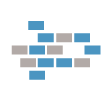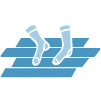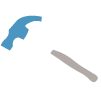Q&A with Residency Unlimited’s Judith Leinen
Oct 31, 2019
We are proud to announce that we have partnered again with Residency Unlimited and will be co-sponsoring another exhibition of theirs titled RU Exhibition: Reclamation.
This November you will be able to able to witness the work of Ahmed Alasad, Mariam Alnoaimi, Elsie Kagan, Judith Leinen and Ran Zhou. As their installations will be up for view at our office located on 351 Van Brunt Street starting November 3rd and ending on November 10th. We are very excited about their new exhibition and welcome you all to come by for a visit.
Opening reception: Sunday, November 3, 2 – 7 pm
On view: November 6 – 10, 2019
Location: Compère Collective, 351 Van Brunt St, Brooklyn
Hours: 12 – 6pm
Curated by Anna Cahn for Residency Unlimited
You can view their site here to learn more about this organization and read their announcement about working with us and using our space.
Please reach out directly to info@realtycollective.com, if you have a project or idea you would like to host in our space.
Q&A with Judith Leinen
Q. How has being a resident in NYC affected or contributed to your art?
A. My work has always been question and response to places and people surrounding me. I allow my encounters to shape my work. In many cases I have worked with the peripheral, the marginal and deficiencies. My project title for my work here has been „Watch the Gap“ from the very beginning. I am interested in gaps in systems, materials and agreements. In imperfection and in the moment where things don’t quite line up, where the functional smoothness is interrupted.
In NYC it has been a challenge to define a focus in a setting of over-stimulation, where all the coexisting layers of the urban fabric are truly interwoven. My search is branching out horizontally rather than digging deep, vertically down into one focus. This has led to several different approaches that evolve next to each other. Yet, they are related.
I am very intrigued by non-perfect solutions and their formal manifestation. I see many examples in traffic and transportation. A shared public space demands a continuous mode of negotiation of powers and interests to figure out how to share the space. It is never static but in permanent flux, searching for a common ground between forces. As a sculpture I also look at these interactions as volumes in space and how they find there way. I like to also consider the relationship between layers and movements on different scales. How small impacts large and how both are entangled.
Q. What do you plan to do next?
A. I will continue working on ongoing projects, deepen what I have started during my time with RU and prepare for several exhibition projects that are coming up. I will go on with a lot of unsolved questions. Beyond that I am working on a book project. After taking this unrestricted studio focus, I will also return to a routine of studio practice and teaching. To me, both of them act in a perfect symbiosis as the impossibilities of communication and the attempt to take someone’s perspective are deeply embedded into both. Teaching to me requires thinking in flux and constant adjustment re-consideration, re-defining.
Q.Does your work comment on current social or political issues? and if so how?
A. My work comments on all of these issues on an abstract way. I cannot and don’t want to give answers or comment on a way that claims tooter solutions or becomes to concrete. I would rather uncover those issues and turn them into visual and physical questions. Many questions I have, complexities that I cannot understand find their way into my work on that way.
I am very interested in unstable conditions. Some of my works are a tangible counterpart to those conditions. I observe the named issues as an interplay of forces and interests that settle in a balance to give temporary shape situations.
My work is often unstable, uncertain or suspended in a fragile balance, flirting with collapse. It is a constant negotiation rather than a solid statement and operates to me also like tool of learning and understanding.
Q.What is your favorite experience or exhibits that you encountered during your time in NYC?
A. I am very interested in how cities function as shared spaces of constant push and pull. I want to be an active observer and be part of this conversation. How the public is used and how structures can shape how life happens can be directly observed all over the city. My example are the WPA recreational facilities everywhere in NY. The 11 outdoor pools that where built in 1936 are still free and open to the public during the summer. I joined a pool for lab swimming every morning at 7 am. It was a fantastic experience. In addition, I enjoyed to encounter, how these spaces work and how intimacy and public life melt together. The borders between the public and the private became very blurry, they rely on a process of communication and the needs that everybody brings into the space. People meet directly and with their physical abilities and vulnerabilities.
Q. What under-appreciated NYC artist, medium, work, or location do you think people should know about?
A. Everybody should know about Adaptive Design, a non-profit that I have known for a while but now, I finally got the chance to work with them. A diverse team of designers, physical- and psycho-therapists, educators and engineers collaborate to transform the environment for people with physical irregularities. A simple example would be a standardized school chair, that get converted with a sturdy cardboard shell to perfectly meet the needs of a student with physical disadvantages.
Their smart transformations of material and use of resources and the unlikely collaborations have impacted my studio practice and teaching. To me they provide a tool to re-think and re-evaluate design and encounter the environment and public on a deeper level. I encourage everyone who has a chance to visit or become a volunteer. Adaptive Design is located in the Garment District.












